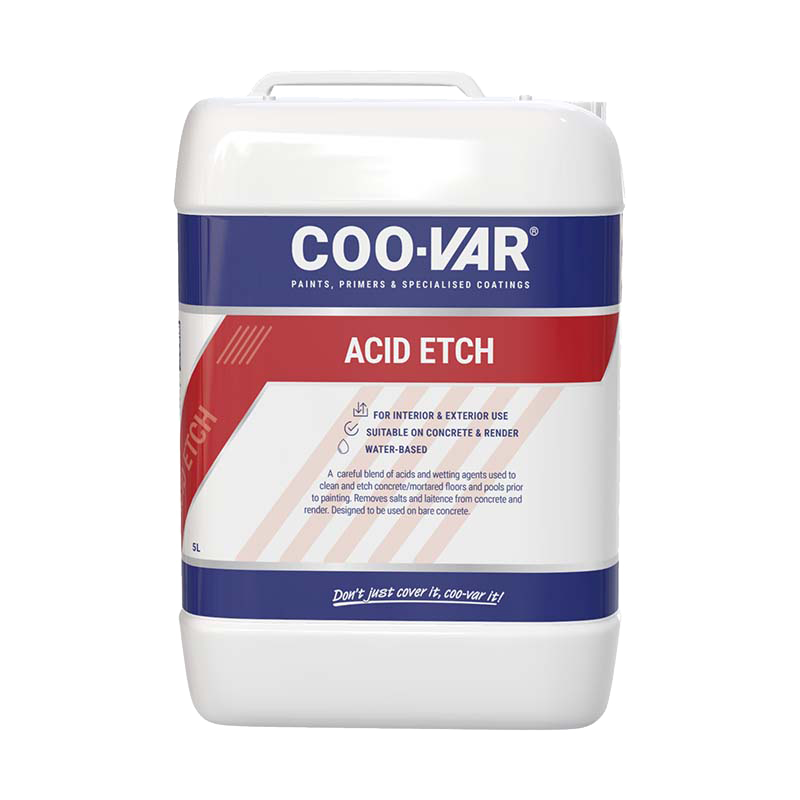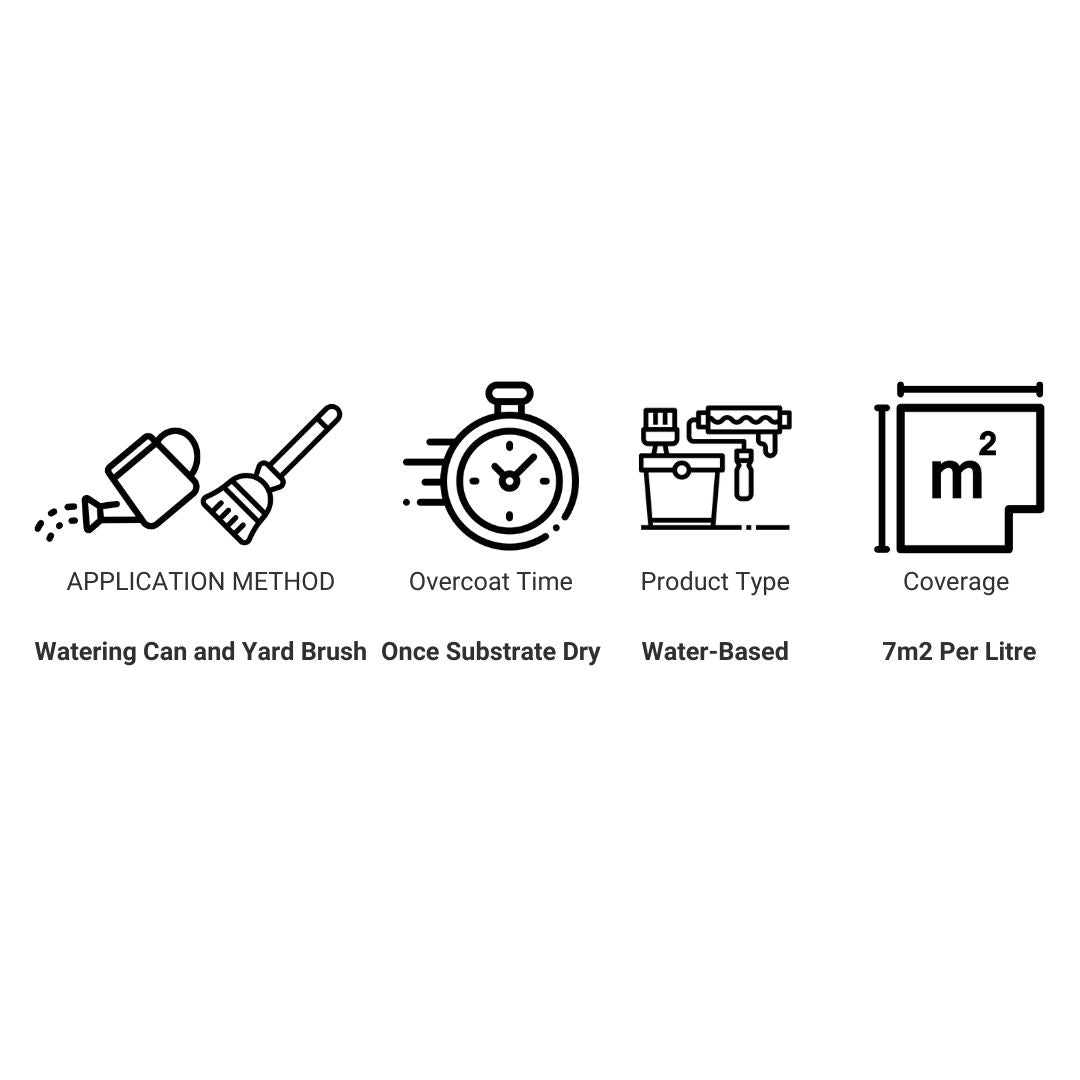What is acid etching?
Acid etching involves applying an acidic solution to a surface to eliminate dust and laitance but also creating a rough texture that enhances adhesion for coatings or paints, or sealants. It's used on concrete old or new.
How do I perform acid etching on concrete?
- Preparation: Clean the surface thoroughly to remove dirt, grease, and loose debris.
- Protection: Wear protective gear, including gloves, goggles, and a mask. Ensure the area is well-ventilated.
- Mixing: Dilute the acid 3 parts water and 1 part acid etch.
- Application: Apply the acid solution evenly using a brush or plastic watering can.
- Rinsing: Rinse the surface thoroughly with water after chemical reaction has finished ( this will be when the solution has stopped fizzing)
- Drying: Allow the surface to dry completely before applying any coatings.
How long should I leave the acid on the surface?
The dwell time varies depending on the level. Typically, for concrete, it may be around 30 minutes. .
How do I neutralize the acid after etching?
After the etching process as finished, the product is automatically neutralised, really to be rinsed off with clean water or mopped up.
Are there alternatives to acid etching?
Yes, alternatives include mechanical methods like sandblasting or grinding, which physically roughen the surface without the use of chemicals.
Can I paint directly after acid etching?
No, after acid etching, you need to thoroughly rinse and neutralize the surface, let it dry completely, and then ensure it is clean and free of any salts before applying paint or coatings.
How do I dispose of leftover acid or rinse water?
Dispose of leftover acid etch that has been rinsed away or mopped down the drain once the chemical process has finished. This will be neutralised naturally and will not harm the environment.


